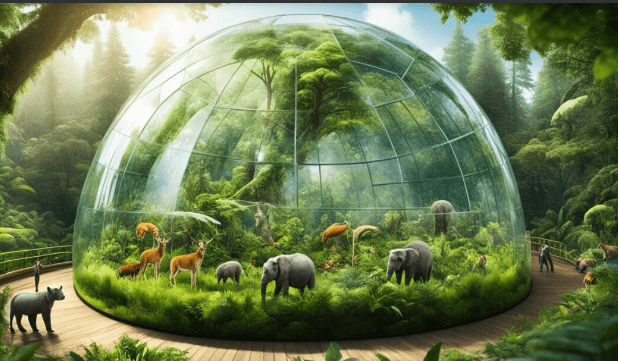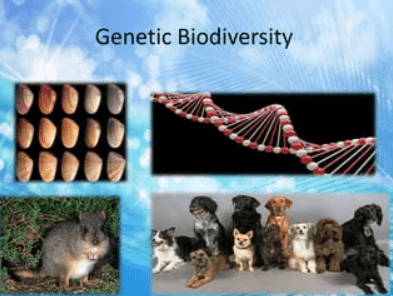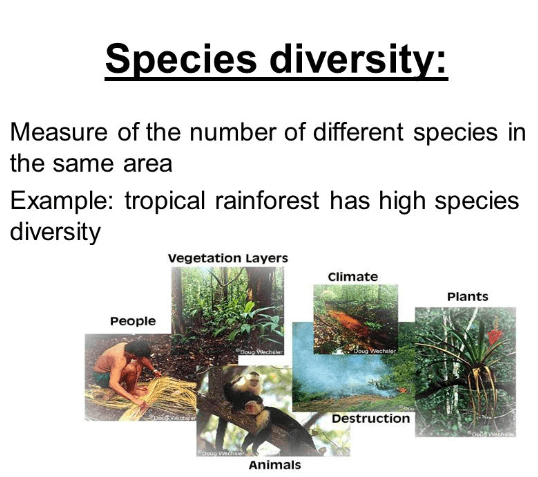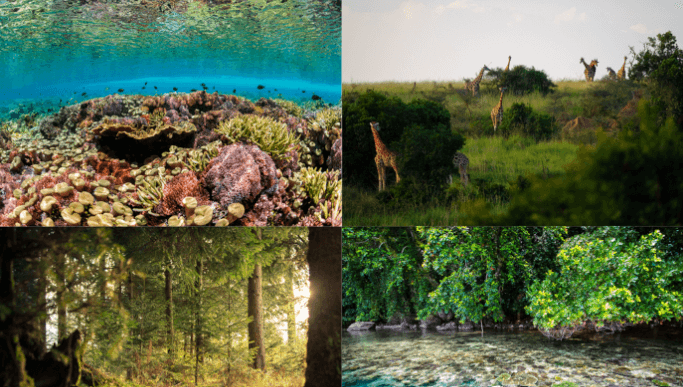Table of Contents
Biodiversity is considered one of the important topics in biology. It consists of three main parts: genetic diversity, species diversity, and ecosystem diversity. Biodiversity is important because it supports life by providing food, clean air, and medicines. It keeps the ecosystem balanced, and healthy. This article covers all the key aspects of biodiversity and explains why protecting it is essential for our planet.
What is Biodiversity?
Biodiversity means the variety of all living things on the Earth, including plants, animals, and other tiny organisms. It is somewhat like a big family of different species that live in forests, oceans, deserts, and even our backyards. Biodiversity is important because each species plays a special role in keeping nature balanced. There are approximately, 14000 different animal species and 15000 plant species present in Asia.

For example, plants give us oxygen to breathe, bees help flowers grow by spreading pollens, and animals help keep the food chain strong. When there’s a lot of biodiversity, nature stays healthy and strong. However, if some species disappear, it can harm the environment. That’s why we need to protect all forms of life to keep our planet a safe, happy place for everyone.
Biodiversity in India
India is one of the most biodiverse countries in the world, with a wide variety of plants, animals, and ecosystems. It has forests, mountains, deserts, rivers, and coastal areas, each supporting unique species. India is home to animals like tigers, elephants, lions, and many rare birds. This rich biodiversity is important for keeping nature balanced and providing resources like food, water, and medicine. However, pollution, deforestation, and climate change threaten India’s biodiversity. Protecting nature and all its living things helps to ensure a healthy environment for the future.

Types of Biodiversity
There are many three different types of Biodiversity: Genetic Biodiversity, Species Biodiversity, and Ecological Biodiversity. Below we have briefly discussed all of these in the table mentioned below.
| Different Types of Biodiversity | |
| Types | Description |
| Genetic Biodiversity | Refers to the variety of genetic information within species. It enables adaptation, survival, and resilience to environmental changes, ensuring the long-term viability of populations and ecosystems. |
| Species Biodiversity | Represents the variety of species within a specific habitat or ecosystem. It includes the number of species, their abundance, and their roles, contributing to ecosystem stability and functioning. |
| Ecological Biodiversity | Involves the diversity of ecosystems, habitats, and ecological processes. It emphasizes the relationships between organisms and their environments, highlighting the complexity and interdependence within ecosystems. |
Genetic Biodiversity (Diversity Within Species)
Genetic biodiversity refers to the variety of genes within a particular species. Just like people have different traits, such as hair color or height, animals and plants also have different characteristics because of their genes. This genetic variety helps species adapt to changes in their environment, like climate change or diseases. For example, some plants might be more resistant to drought due to their unique genes. When there is more genetic diversity, a species is generally healthier and better able to survive.

Species Biodiversity (Diversity Between Species)
Species biodiversity refers to the variety of different species in a specific area or ecosystem. This includes all types of living things, such as plants, animals, fungi, and microorganisms. Each species has its own unique role and contributes to the health of the ecosystem. For example, some plants provide food for animals, while others produce oxygen. When there are many different species, the ecosystem is stronger and can better withstand changes, like diseases or climate shifts.

Ecological Biodiversity (Diversity Between Ecosystems)
Ecological biodiversity is about the variety of ecosystems and habitats in nature. It includes different places where plants and animals live, such as forests, rivers, and deserts. Each ecosystem has its own unique mix of living things and their interactions. This diversity is important because it helps maintain balance in nature. For example, various plants provide food and shelter for different animals, and they all depend on each other. When ecosystems are diverse, they can recover better from changes like pollution or climate change.

Importance of Biodiversity
- Ecosystem Stability: Biodiversity ensures that ecosystems are resilient and can withstand environmental changes. Diverse species contribute to the balance of food changes, nutrient cycles, and maintenance.
- Source of Food and Medicine: Many plants, animals, and microorganisms provide essential resources like food, medicine, and raw materials. For example, many medicines are derived from plant compounds.
- Economic Value: Biodiversity supports industries like agriculture, fisheries, and tourism. Healthy ecosystems provide services that boost local and global economies.
- Climate Regulation: Forests, oceans, and other ecosystems absorb carbon dioxide, helping to regulate the climate. Biodiverse ecosystems contribute to these processes, reducing the impacts of climate change.
- Cultural and Recreation Value: Biodiversity has intrinsic value, providing aesthetic, recreational, and cultural benefits. Many societies depend on nature for traditions, and activities like hiking and bird-watching rely on diverse habitats.





 50 Vegetables Name for Kids in English a...
50 Vegetables Name for Kids in English a...
 Body Parts Name, All 50 Body Parts Name ...
Body Parts Name, All 50 Body Parts Name ...
 Flowers Names in English and Hindi, List...
Flowers Names in English and Hindi, List...